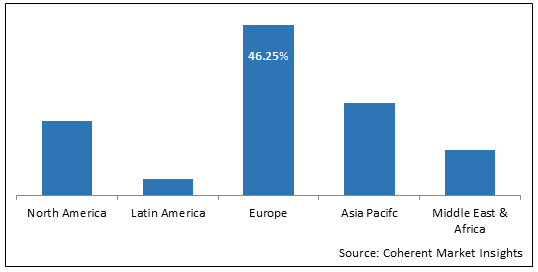Citrus pectin is a naturally occurring polysaccharide found in citrus fruits such as oranges, lime, and lemons among others. Citrus pectin can be used as a thickening agent when heated with sugar. These characteristics of citrus pectin are used for manufacturing jams and jellies among others. Moreover, citrus pectin has applications in industries such as food and beverages, pharmaceuticals, and personal care & cosmetics. On the basis of product type, citrus pectin market is segmented into high methoxyl pectin, and low methoxyl pectin.
Global citrus pectin market was valued at US$ 580.6 Million in 2021 in terms of revenue, exhibiting a CAGR of 6.6% during the forecast period (2022 to 2030).
Drivers
Increasing demand for citrus pectin in the baking and confectionery industry is expected to drive the market growth during the forecast period. Pectin is used as a sugar replacer or a fat in low calorie foods and bakery jams. The demand for citrus pectin from the confectionery industry is increasing as it is used in jams and jellies to provide a gel-like structure and facilitate the release of good flavor. Citrus pectin is also helpful in enhancing the color, texture, and shelf life of confectionary products.
The rise in the consumption of luxury foods and beverages around the world is the main driver of market expansion. The market is expected to develop as a result of greater usage of pectin in juice for improved mouth feel, acidified dairy applications for restricted jams, oxidized protein drinks, protein stability, and increased awareness of pectin's various uses among food and beverage manufacturers.
High-methoxyl and low-methoxyl pectin are both used in the confectionery industry. While substituting low-methoxyl pectin with high-methoxyl pectin, the confectioneries need to use 10% more pectin for achieving a similar level of firmness that can be achieved by use of low-methoxyl pectin. In bakery products such as cakes and pastries, the gelling characteristics of pectin help in preventing discoloring of fruits, and from drying out. The U.S. Food and Drug Administration recognized the use of citrus pectin as safe, when it is used as an emulsifier and thickener.
The COVID- 19 outbreak had a considerable impact on the overall industry growth on account of the shutdown of various manufacturing & industrial facilities along with delays in several infrastructural development projects. However, government relaxations on imposed lockdowns, followed by the resumption of industries and operations have augmented the market growth.
Among region, Europe dominated the global citrus pectin market in 2021, followed by Asia Pacific and North America, respectively.
Figure 1. Global Citrus Pectin Market Value Share (%), By Region, 2021

To learn more about this report, Request sample copy
Market Restraints
Increasing side effects associated with the consumption of citrus pectin are expected to hamper the global citrus pectin market growth. Citrus pectin is obtained from citrus fruits such as orange, among others. Although, it is a natural source of pectin, it can have side effects such as gas, bloating, and loose stools among others, as people allergic to citrus fruits cannot consume citrus pectin-based products.
Moreover, citrus pectin can reduce the human body’s ability to absorb beta-carotene, which is an important nutrient, and other drugs such as Digoxin (a heart medicine), Tetracycline antibiotics, and Lovastatin (a cholesterol-lowering drug), among others. This is expected to hamper growth of global citrus pectin market during the forecast period.
Citrus Pectin Market Report Coverage
| Report Coverage | Details | ||
|---|---|---|---|
| Base Year: | 2021 | Market Size in 2021: | US$ 580.6 Mn |
| Historical Data for: | 2017-2020 | Estimated Year: | 2022 |
| Forecast Period 2022 to 2030 CAGR: | 6.6% | Forecast Period: | 2022-2030 |
| Geographies covered: |
|
||
| Segments covered: |
|
||
| Companies covered: |
Herbstreith & Fox GmbH, Cargill Inc., CP Kelco, DSM Andre Pectin, Silvateam S.p.A, DuPont de Nemoursm Inc., Naturex A.G., Compañía Española de Algas Marinas S.A. (CEAMSA), and Krishna Pectins Pvt. Ltd |
||
| Growth Drivers: |
|
||
| Restraints & Challenges: |
|
||
Uncover macros and micros vetted on 75+ parameters: Get instant access to report
Market Opportunities
Pharmaceutical applications of citrus pectin are expected to fuel the market growth over the forecast period due to the increasing shifting towards natural and plant-based products for treating various diseases. Citrus pectin finds numerous pharmaceutical applications due to its use as binder, suspension agent, stabilizer, binding agent, and film forming agent
The pectin is also being disintegrated in various tablet formulations and as a component in topical therapeutic bases. The pharmaceutical industry is also making use of citrus pectin as excipients. In the pharmaceutical industry, citrus pectin is also used extensively for treating gastrointestinal disorders and for reducing blood cholesterol levels. It is also useful in treating various kinds of metal poisoning and cancers.
Figure 2. Global Citrus Pectin Market Value Share (%), By Application, 2021

To learn more about this report, Request sample copy
On the basis of Application, in 2021, Food accounted the largest market share of 76% in terms of revenue, followed by Beverages and Pharmaceuticals. This is mainly because citrus pectin mainly used in bakery and confectionary industry.
Recent Developments
Competitive Section
Major players operating in the global citrus pectin market include Herbstreith & Fox GmbH, Cargill Inc., CP Kelco, DSM Andre Pectin, Silvateam S.p.A, DuPont de Nemoursm Inc., Naturex A.G., Compañía Española de Algas Marinas S.A. (CEAMSA), and Krishna Pectins Pvt. Ltd
Share
Share
Missing comfort of reading report in your local language? Find your preferred language :
Transform your Strategy with Exclusive Trending Reports :
Frequently Asked Questions
Select a License Type
Credibility and Certifications

860519526

9001:2015
27001:2022


Joining thousands of companies around the world committed to making the Excellent Business Solutions.
View All Our Clients
US Reciprocal Tax Impact Analysis On Citrus Pectin Market
Stay updated on tariff changes with expert insights and timely information